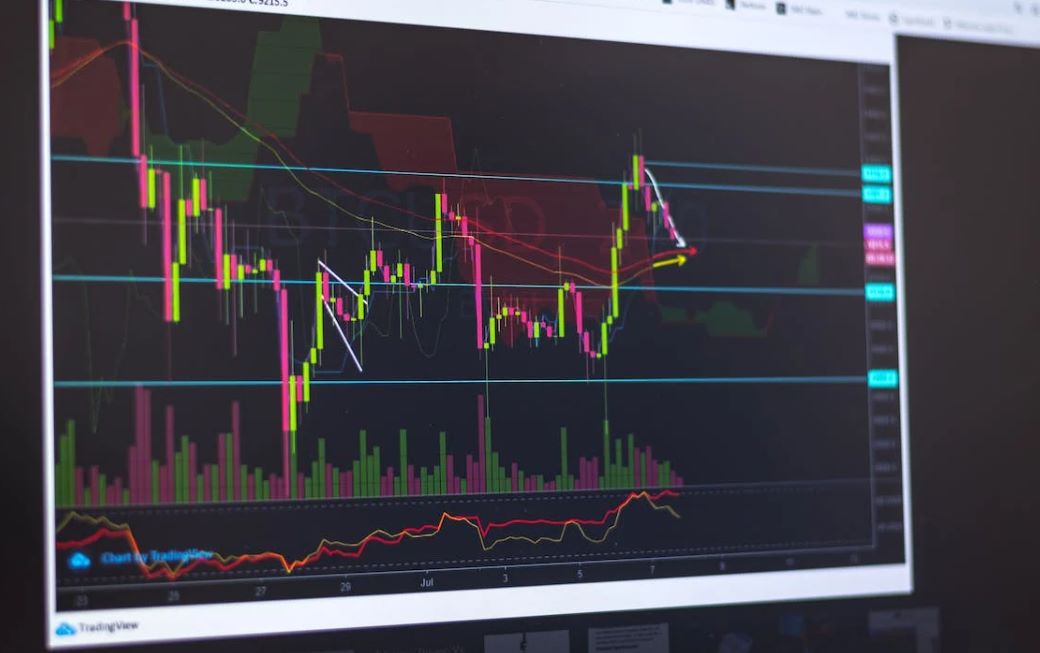Python is a widely used high-level programming language that has been gaining popularity recently, particularly in data science and data analysis applications. One of the key advantages of Python is its ability to visualise data using various libraries, making it easier to understand complex data sets.
Visualisation in Python is the process of creating visual representations of data that allow us to explore, analyse and communicate information effectively. It provides a way to convert data into a visual format that can be easily understood by both technical and non-technical audiences.
In this article, we will take a closer look at the basics of visualisation in Python, and explore some of the most popular libraries used for creating visualisations, such as Matplotlib, Seaborn, and Plotly. By the end of this article, you will have a good understanding of how to use these libraries to create compelling visualisations that can help you gain insights into your data.
Quick Links To Online Data Science Courses
UNIVERSITY OF NEW SOUTH WALES SYDNEY
GRADUATE CERTIFICATE IN DATA SCIENCE
- Duration: As little as 8 months
- 4 courses
- Study Intakes: January, March, May, July, September and October
RMIT ONLINE
ONLINE GRADUATE CERTIFICATE IN DATA SCIENCE
- Part-time 8 months intensive
- AU$3,840 per course (2023)
- Next intake:
January, March, May, July, September, October
JAMES COOK UNIVERSITY AUSTRALIA
GRADUATE DIPLOMA OF DATA SCIENCE (INTERNET OF THINGS) ONLINE
- 16 months, Part-time
- 8 (One subject per each 7-week study period)
- $3,700 per subject, FEE-HELP is available
University Of Technology Sydney
Applied Data Science for Innovation (Microcredential)
- 6 weeks
- Avg 14 hrs/wk
- $1,435.00
What is Data Visualization?
The practice of visually representing data is referred to as data visualisation, which is a subfield of data analysis. It displays the data in a graphical format and is an efficient technique to communicate conclusions drawn from the analysis of the data.
With data visualisation, we may get a visual overview of our data. When presented with images, maps, and graphs, the human mind is able to more easily digest and comprehend any data that is presented to it.

Data visualisation plays an important part in the representation of both small and large data sets, but it is more helpful when we have huge data sets because it is hard to view all of our data in large data sets, much alone manually analyse and interpret it all.
The graphical depiction of information and data is what is known as "data visualisation." Data visualisation tools make it possible to quickly see and comprehend patterns, outliers, and trends in the data through the utilisation of graphical components such as charts, graphs, and maps.
In addition to this, it offers a good method for workers or business owners to display data in a way that does not confuse audiences who are not technically oriented.
In the realm of Big Data, data visualisation tools and technologies are indispensable for conducting in-depth analyses of copious quantities of data and arriving at conclusions supported by said data.
What Are the Advantages and Disadvantages of Data Visualization?
It can appear that there are no drawbacks to doing something as uncomplicated as displaying data in graphical representation. Yet, when displayed in the incorrect manner of data visualisation, data can sometimes be misrepresented or misconstrued. While deciding whether or not to build a data visualisation, it is essential to bear in mind both the benefits and drawbacks of the option.
Advantages
Colours and patterns are naturally appealing to the human eye. Humans are able to differentiate between red and blue quite rapidly, as well as squares and circles. Visual elements permeate every aspect of our society, from paintings and commercials to films and television shows.
Another sort of visual art that piques our attention and maintains our focus where it should be is data visualisation. When we look at a chart, the first things that stand out to us are the patterns and the outliers.
When something can be seen, it is much easier for us to take it in. It's like telling a story, but with a point. You probably already have some idea of how much more powerful a visualisation can be if you've ever tried to see a pattern in a large spreadsheet of data but were unsuccessful.
The following is a list of other benefits associated with data visualisation:
Sharing information in a simple manner.
Investigate potential openings in an interactive manner.
Imagine the different combinations and connections.
Disadvantages
Despite the fact that there are a great number of benefits, some of the drawbacks could be less visible. While examining a visualisation that has a large number of distinct data points, for instance, it is simple to form an assumption that is not correct. Sometimes, though, the visualisation is merely poorly conceived, which results in it being either biased or unclear.
The following are some additional drawbacks:
- information that is either incorrect or biased.
- It's not always the case that a correlation indicates a cause.
- The essential meaning of certain communications may be lost in translation.
Why Data Visualization Is Important
The relevance of data visualisation can be summed up in a single sentence: it enables people to observe, interact with, and gain a deeper comprehension of data.
Regardless of the degree of experience that a person possesses, the appropriate visualisation may get everyone on the same page, no matter how basic or complicated the topic is.
It's difficult to conceive of a professional sector that wouldn't gain from having data presented in a way that's easier to grasp.
Understanding data is beneficial not just to the domains of science, technology, engineering, and mathematics (STEM), but also to fields such as government, finance, marketing, history, consumer products, service industries, education, sports, and so on.
Even while we will always wax poetically about data visualisation (you are, after all, on the Tableau website), there are undeniably useful applications that can be found in real life that cannot be ignored.
As a result of its widespread use, visualisation is also considered to be one of the most valuable talents for professionals to acquire. The more effectively you can visually communicate your arguments, whether in a dashboard or a slide deck, the more effectively you will be able to exploit the information.
The idea of the layperson working as a data scientist is gaining popularity. To adapt to a world that is driven by data, skill sets are undergoing shifts. The ability to utilise data to make decisions and use graphics to communicate tales about when data informs the who, what, when, where, and how is becoming an increasingly vital skill for professionals.
People who are able to move fluidly between the realms of creative storytelling and rigors analysis are highly valued in today's professional world, despite the fact that traditional education tends to draw a clear divide between the two. For example, data visualisation is positioned directly in the middle of analysis and visual storytelling.
Introduction to Data Visualization in Python
The practice of attempting to gain an understanding of data by presenting it in a graphical format, with the goal of revealing patterns, trends, and correlations that would not be discernible in any other way. This is the core of the discipline of data visualisation.
Python has a number of excellent graphing libraries, each of which is packed with a variety of capabilities. Python provides an amazing library for you to utilise, regardless of whether you want to generate interactive charts or fully customised ones.
The following is a list of some of the most common plotting libraries, which should give you a good overview:
- Matplotlib is easy to use and gives users a great deal of flexibility.
- Pandas Built on Matplotlib, the user interface for the visualisation tool is intuitive.
- Seaborn has a very sophisticated user interface and excellent default style options.
- plotnine is an application that employs Syntax of Graphics and is based on R's ggplot2 package.
- Plotly allows for the creation of interactive graphs.
Matplotlib
Matplotlib is the most popular Python plotting library. It is a low-level library with a Matlab-like interface that offers lots of freedom at the cost of having to write more code.
Matplotlib is a visualisation toolkit written in Python that may be used to plot arrays in two dimensions. Python is the programming language used to write Matplotlib, and the NumPy library is one of its dependencies.
It is also compatible with the IPython and Python shells, as well as the Jupyter notebook and web application servers.
Matplotlib comes with a broad selection of plots that may assist us in gaining a deeper knowledge of trends, patterns, and correlations. Some examples of these plots are line, bar, scatter, and histogram plots. In the year 2002, John Hunter was the one who first presented it.
To install Matplotlib, pip, and conda can be used.
pip install matplotlib
or
conda install matplotlib
Matplotlib is specifically suitable for creating basic graphs like line charts, bar charts, histograms, etc. Importing it is as simple as putting in:
import matplotlib.pyplot as plt
Scatter Plot
We can use the scatter method in Matplotlib to generate a scatter plot of our data. To give our plot a title and labels, we will also generate a figure and an axis with the help of the plt.subplots function.
# create a figure and axis
fig, ax = plt.subplots()
# scatter the sepal_length against the sepal_width
ax.scatter(iris['sepal_length'], iris['sepal_width'])
# set a title and labels
ax.set_title('Iris Dataset')
ax.set_xlabel('sepal_length')
ax.set_ylabel('sepal_width')
By colouring each data point according to its class, we may give the graph a deeper level of significance. This may be accomplished by first generating a dictionary that has a mapping from class to colour, and then dispersing each point on its own with a for-loop while passing the appropriate colour.
# create a colour dictionary
colors = {'Iris-setosa':'r', 'Iris-versicolor':'g', 'Iris-virginica':'b'}
# create a figure and axis
fig, ax = plt.subplots()
# plot each data-point
for i in range(len(iris['sepal_length'])):
ax.scatter(iris['sepal_length'][i], iris['sepal_width'][i],color=colors[iris['class'][i]])
# set a title and labels
ax.set_title('Iris Dataset')
ax.set_xlabel('sepal_length')
ax.set_ylabel('sepal_width')
Line Chart
By using the plot method in Matplotlib, we have the ability to generate a line chart. We can also plot many columns in one graph by looping over the columns we want and drawing each column on the same axis. This allows us to plot numerous columns at the same time.
# get columns to plot
columns = iris.columns.drop(['class'])
# create x data
x_data = range(0, iris.shape[0])
# create figure and axis
fig, ax = plt.subplots()
# plot each column
for column in columns:
ax.plot(x_data, iris[column])
# set title and legend
ax.set_title('Iris Dataset')
ax.legend()
Histogram
Using Matplotlib's hist function, we are able to generate a histogram for our data. If we feed it categorical data, such as the points column from the wine-review dataset, then it will automatically determine the frequency with which each class occurs.
# create figure and axis
fig, ax = plt.subplots()
# plot histogram
ax.hist(wine_reviews['points'])
# set title and labels
ax.set_title('Wine Review Scores')
ax.set_xlabel('Points')
ax.set_ylabel('Frequency')
Bar Chart
The bar technique can be utilised in the construction of a bar chart. Because the frequency of a category is not automatically calculated by the bar chart, the value counts function of pandas will be utilised in order to do this.
The bar chart is most effective when used with categorical data that does not have an excessive number of different categories (less than 30), as this type of chart may quickly become rather confusing otherwise.
# create a figure and axis
fig, ax = plt.subplots()
# count the occurrence of each class
data = wine_reviews['points'].value_counts()
# get x and y data
points = data.index
frequency = data.values
# create bar chart
ax.bar(points, frequency)
# set title and labels
ax.set_title('Wine Review Scores')
ax.set_xlabel('Points')
ax.set_ylabel('Frequency')
Pandas Visualization
Data structures, such as data frames, as well as data analysis tools, such as the visualisation tools that we will use in this article, may be obtained from the Pandas library, which is an open-source, high-performance, and user-friendly resource.
The Pandas Visualization package makes it simple to generate graphs using a dataframe and series from the pandas library. It also offers a higher-level API than Matplotlib, which means that we can get the same results with a smaller amount of code.
Data structures, such as data frames, as well as data analysis tools, such as the visualisation tools that we will use in this article, are provided by the Pandas library, which is an open-source, high-performance, and easy-to-use data library.
The Pandas Visualization package makes it very simple to generate graphs using a pandas dataframe and series as the input. It also offers a higher-level API than Matplotlib, which means that we can get the same results with a smaller amount of code.
Installing Pandas may be done using either the pip or conda packages.
pip install pandas
or
conda install pandas
Scatter Plot
We may use the 'dataset>' function in the Pandas programming language to generate a scatter plot. plot.scatter() should be called, and you should provide it with two arguments: the name of the x-column, as well as the name of the y-column. Also, we have the option of giving it a title.
iris.plot.scatter(x='sepal_length', y='sepal_width', title='Iris Dataset')
Line Chart

To create a line chart in Pandas we can call <dataframe>.plot.line(). While in Matplotlib, we needed to loop through each column we wanted to plot, in Pandas we don’t need to do this because it automatically plots all available numeric columns (at least if we don’t specify a specific column/s).
iris.drop(['class'], axis=1).plot.line(title='Iris Dataset')
Histogram
The subplots argument indicates that we desire a distinct plot for each feature, while the layout indicates the number of plots that should be arranged in each row and column.
wine_reviews['points'].plot.hist()
Bar Chart
In order to plot a bar chart, we may use the plot.bar() function; however, before we can execute this method, we must first obtain our data. Using the value count() function, we will first count the occurrences, and then using the sort index() method, we will sort the occurrences from least to largest.
wine_reviews['points'].value_counts().sort_index().plot.bar()
It’s also really simple to make a horizontal bar chart using the plot.barh() method.
wine_reviews['points'].value_counts().sort_index().plot.barh()
Seaborn
Matplotlib is the foundation for Seaborn, a data visualisation package written in Python. It offers a straightforward user interface for fashioning visually appealing graphs.
Seaborn has quite a few advantages to offer. Using Matplotlib, for instance, it is possible to draw graphs in a single line that would normally need numerous tens of lines. It features fantastic default designs, and in addition, it possesses a pleasant user experience for interacting with Pandas dataframes.
Python users interested in creating statistical representations might use the Seaborn package, which focuses on datasets. It is built on top of matplotlib and has the ability to build a variety of visualisations.
It is connected with the data structures that pandas provides. Internally, the library performs the necessary mapping and aggregating operations in order to provide relevant graphics. It is strongly suggested that a Jupyter/IPython interface be utilised while operating in matplotlib mode.
Importing it is as simple as putting in:
import seaborn as sns
Scatter Plot
When creating a scatterplot, we can make use of the.scatterplot method. Similar to when we were working with Pandas, we will need to pass it the column names of the x and y data.
However, in this case, we will also need to pass the data itself as an additional argument because we aren't calling the function on the data itself like we did when we were working with Pandas.
sns.scatterplot(x='sepal_length', y='sepal_width', data=iris)
We also have the option, which is much simpler than using Matplotlib, to highlight the points according to class by using the hue parameter.
sns.scatterplot(x='sepal_length', y='sepal_width', hue='class', data=iris)
Line Chart
Use the sns.lineplot function to generate a line chart to represent your data. The sole argument that must be provided is the data, which in our instance consists of the four numerical columns that are taken from the Iris dataset.
We may also use the sns.kdeplot technique, which is cleaner when you have a lot of outliers in your dataset since it smoothes the edges of the curves. If you would want to utilise this method, go here.
sns.lineplot(data=iris.drop(['class'], axis=1))
Histogram
In Seaborn, we make use of the sns.distplot function in order to generate a histogram. We need to tell it the column we want to plot, and it will figure out how many times that column appears on its own.
Also, we have the option of passing it the number of bins that we want to use, as well as whether or not we want to draw a Gaussian kernel density estimate within the graph.
sns.distplot(wine_reviews['points'], bins=10, kde=False)
Conclusion
In conclusion, visualisation in Python is an essential tool for data analysis and communication. It allows us to explore and understand complex data sets by converting them into visual representations that can be easily interpreted by both technical and non-technical audiences.
Matplotlib, Seaborn, and Plotly are just a few of the many powerful visualisation libraries available in Python. They provide a wide range of tools and options for creating various types of charts, graphs, and visualisations.
Whether you're a data analyst, data scientist, or someone who works with data regularly, learning how to create visualisations in Python is a valuable skill that can help you gain insights into your data and communicate your findings effectively.
We hope that this article has provided you with a good introduction to the basics of visualisation in Python and that you have gained a better understanding of the tools and libraries available for creating visualisations.
Content Summary
- Python is a widely used high-level programming language that has been gaining popularity recently, particularly in data science and data analysis applications.
- One of the key advantages of Python is its ability to visualise data using various libraries, making it easier to understand complex data sets.
- Visualisation in Python is the process of creating visual representations of data that allow us to explore, analyse and communicate information effectively.
- In this article, we will take a closer look at the basics of visualisation in Python, and explore some of the most popular libraries used for creating visualisations, such as Matplotlib, Seaborn, and Plotly.
- By the end of this article, you will have a good understanding of how to use these libraries to create compelling visualisations that can help you gain insights into your data.
- While deciding whether or not to build a data visualisation, it is essential to bear in mind both the benefits and drawbacks of the option.
- As a result of its widespread use, visualisation is also considered to be one of the most valuable talents for professionals to acquire.
- Introduction to Data Visualization in Python The practice of attempting to gain an understanding of data by presenting it in a graphical format, with the goal of revealing patterns, trends, and correlations that would not be discernible in any other way.
- This is the core of the discipline of data visualisation.
- Matplotlib is the most popular Python plotting library.
- Matplotlib is a visualisation toolkit written in Python that may be used to plot arrays in two dimensions.
- If we feed it categorical data, such as the points column from the wine-review dataset, then it will automatically determine the frequency with which each class occurs.#
- Because the frequency of a category is not automatically calculated by the bar chart, the value counts function of pandas will be utilised in order to do this.
- Data structures, such as data frames, as well as data analysis tools, such as the visualisation tools that we will use in this article, are provided by the Pandas library, which is an open-source, high-performance, and easy-to-use data library.
- Visualization package makes it very simple to generate graphs using a pandas dataframe and series as the input.
- Python users interested in creating statistical representations might use the Seaborn package, which focuses on datasets.
- It is built on top of matplotlib and has the ability to build a variety of visualisations.
- It is connected with the data structures that pandas provides.
- Importing it is as simple as putting in:import seaborn as sns Scatter Plot When creating a scatterplot, we can make use of the.scatterplot method.
- If you would want to utilise this method, go here.sns.lineplot(data=iris.drop(['class'], axis=1)) Histogram In Seaborn, we make use of the sns.distplot function in order to generate a histogram.
- Matplotlib, Seaborn, and Plotly are just a few of the many powerful visualisation libraries available in Python.
- They provide a wide range of tools and options for creating various types of charts, graphs, and visualisations.
- Whether you're a data analyst, data scientist, or someone who works with data regularly, learning how to create visualisations in Python is a valuable skill that can help you gain insights into your data and communicate your findings effectively.
- We hope that this article has provided you with a good introduction to the basics of visualisation in Python and that you have gained a better understanding of the tools and libraries available for creating visualisations.





